Pseudonyms
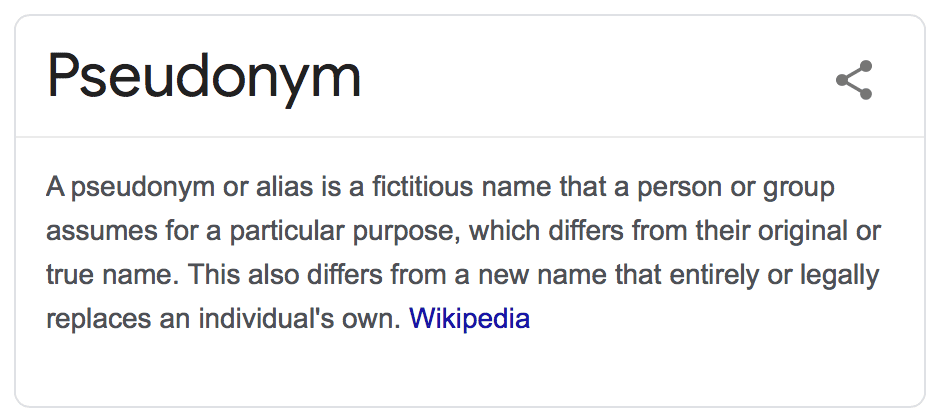
It was common practise over time and especially during the Art Deco years for artists to use pseudonyms. It would seem they often did this on statues of similar design but made of different materials and probably for commercial reasons.
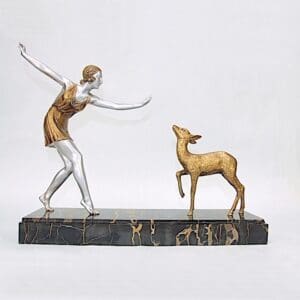
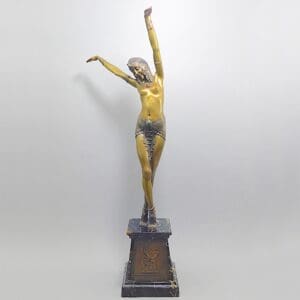
They usually used family names including mothers and wives maiden names and other family members as they were easy to remember. Even Demetre Chiparus, one of the greatest artist of his time used pseudonyms. For example Darcles, Ardun, Andin, Costan and Larcourt. Chiparus sometimes used the name Lullier, which happens to be his wife’s surname.
Left: A signed Chiparus and
Right: a Chiparus signed Ardin
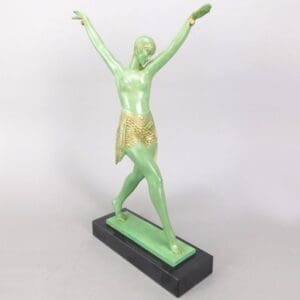
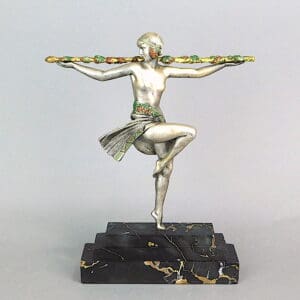
Pierre Le Faguays used Pierre Laurel, Matto and his own name on his bronzes. For his non bronze pieces he signed them Fayral. I suggest this was because he was a famous bronze artist and preferred not to be associated with non bronze, lesser priced pieces he made for the cheaper spelter market.
Left: A Pierre Le Faguays signed bronze and
Right: signed Fayral on his spelter pieces
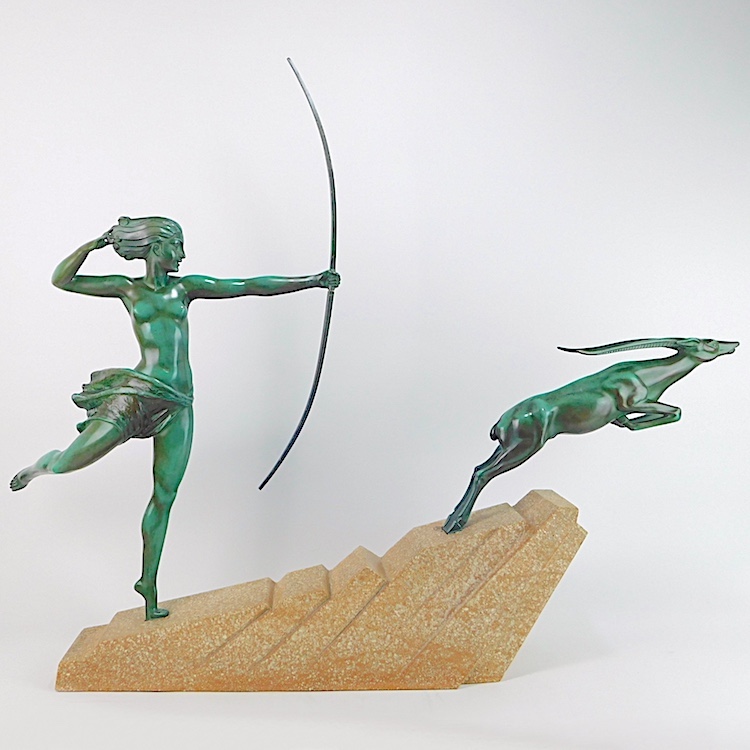
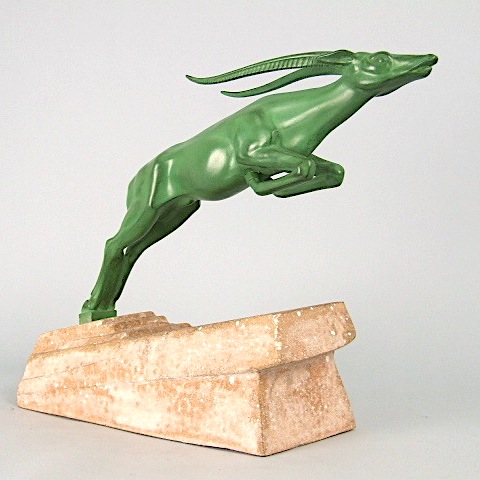
De Marco was a name used by the Le Verrier foundry when a statue was a marriage of artists.
For instance in the Group Atalante statue, the Diane was designed by Bouraine and the leaping deer was by Max Le Verrier – hence it was signed De Marco.
Left: Group Atalante by Le Verrier and Bouraine signed De Marco
Right: Individual figures from the group.
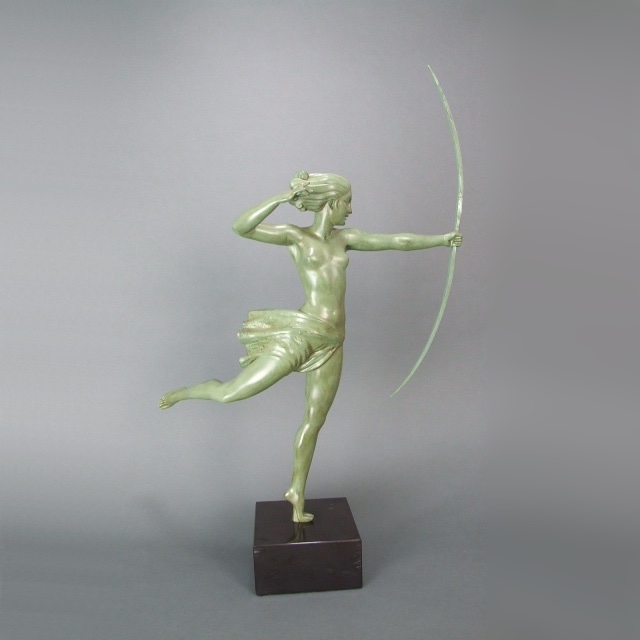
Other known pseudonyms:
Marcel Bouraine used Briand, Derenne and possibly Denis.
Lemoine (Jean) was the actual name of a French art deco sculptural artist who used – amongst others – Lemo, Melo, Janle and Le Jan. He used Janle on his ceramics pieces, Melo was used on spelter pieces.
Lorenzl used his name but re arranged the letters, i.e. – Lor, Renzl and Rol.
Ugo Cipriani used – Menneville, Roggia, De Viggo and his own name.
Molins-Balleste used – Molins, Balleste, Bal and Molins-Balleste.
Earlier statues by Bergman were sometimes signed in reverse – Namgreb.
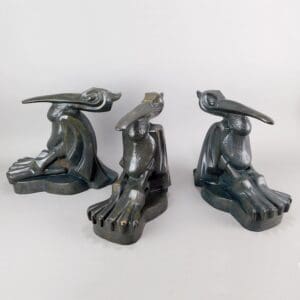

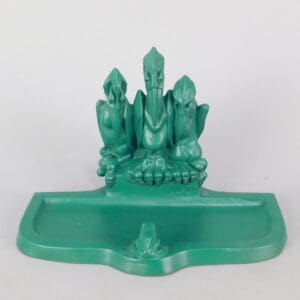
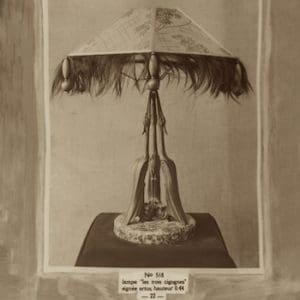
We had previously believed Artus was a Pseudonym used by Max Le Verrier on his early bird sculptures (shown above) but we now know that Artus was an artist in his own right courtesy of the Le Verrier family.
It is not unknown for sculptures to be signed at a later date by the unscrupulous, who has a marble base signed with a name that bears no actual resemblance to the original artist. I have seen an unmistakable Joe De Roncourt bending bar man inscribed with a Chiparus signature!
Also bear in mind that sometimes when a marble base is broken it may have been replaced with an original signed base of a lessor artist or indeed a signed marble base which has broken is replaced with an unsigned marble base. Sometimes a statue could have been left unsigned to avoid the foundry paying all their commissions.
As a consequence, a sculpture should be bought for its aesthetic qualities rather than the signature, and pick your source carefully as a reputable dealer is likely to know his or her subject. A signed piece is always preferable to an unsigned piece – as long as the signature is genuine.
Next Blog: Gilbert Bayes – an English Sculptor
Back to all blogs